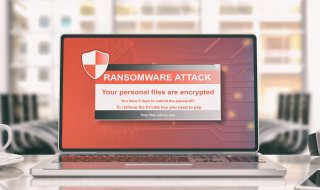Cybersecurity as a topic starts to take place in high-level meetings. This means one thing; businesses are getting more concerned with global cybersecurity threats. And for good reasons, as this Cyber Security Analysis report shows us, different industries are being targeted by hackers.
If you’re unfamiliar with data breaches and their impact on businesses, it’s time to get educated. Cybersecurity risks have proliferated over the years, with major events shaping the overall global security landscape.
But that begs the question, what can businesses and organizations do to prevent cyber attacks in 2022? To explain that, we have to outline the five key strategies. That’s exactly what we’re going to do in this guide. So with all that said, let’s start.
Contents
Manage Data Across the Cloud-Based Collaboration Apps
Businesses are getting increasingly reliant on cloud platform solutions for managing day-to-day operations. The most popular cloud management platforms include the likes of Microsoft 365 and Google Workspace. Both give users access to a myriad of tools for productivity and collaboration.
But these solutions are prime targets for cyber attacks. So a 2022 cyber-security trend is to find ways to manage data across the cloud and keep it safe. Luckily, we can do that with a cloud management security policy. A sound policy is an excellent cybersecurity practice. But we can do more.
The great thing about these platforms is that they allow us to address cybersecurity issues. Whether internal or external, threat actors can be stopped before the attack takes shape. But to prevent a cyber-attack, you need the tools to detect threats to your critical infrastructure.
Threat detection is the best way to protect data from cloud platforms in 2022. One way to do that is to acquire the services of third-party advanced threat protection solutions. ATP can stop security breaches by detecting threats before they can take shape.
Secure Your Email
Cybersecurity is an evolving threat landscape where sensitive data becomes the most important priority for everyone involved. Companies value data highly, but so do hackers. In addition, since businesses communicate through email with all branches of business, securing your email system and mailboxes becomes a top priority.
That’s even more important if your organization uses the cloud. For businesses using Microsoft 365, protecting your M365 mailboxes ranks highly on the priority list. But how do you do that? A sound strategy is to implement encryption across your mailbox systems. Encryption will help you stop cyber attacks by making it impossible for hackers to access your computer systems and email accounts.
Encryption is one of the few security solutions that also sees wider implementation in 2022. But it seems we increasingly rely on encryption as the global cyber risk index grows. Encryption can not only secure your email accounts, but it can also add another layer of defense to existing security controls.
Artificial Intelligence And Its Role in Cybersecurity
Modern cybersecurity solutions implement AI technology to stop cyber attacks. For example, AI can help companies detect phishing attacks, ransomware attacks, and similar malware attacks. That’s why security services look towards AI as the savior and grace of cybersecurity.
But one of the biggest cybersecurity challenges is finding ways to stop emerging threats before they take shape. This is why AI is instrumental in the future of digital transformation initiatives, particularly in the area of cybersecurity.
Through artificial intelligence, experts can predict cybersecurity breaches in real time by examining the behavior of known threat actors. In addition, these machine-learning algorithms can examine vast amounts of data and compile it into readable data.
Device Security

Businesses are facing a particularly uncomfortable issue. Namely, how do you protect devices when so many are out there? Nowadays, employees can stay at home and work on their PCs, laptops, smartphones, and even tablets. These devices are all equipped with the necessary apps and services to allow you to work conveniently.
But that presents a security risk and one that hackers try to exploit as much as possible. Smartphones and tablets cannot be secured the same way as laptops and PCs. To put it simply, the technology isn’t there yet.
Although some cybersecurity experts have developed means to protect devices, they’re nowhere near capable of being used as foolproof solutions. But if we want to protect devices, we must protect the data.
That’s why we can implement security controls from third-party solutions that can wipe sensitive data from devices in case of an emergency. Whether an employee loses their phone or is hacked, cloud security solutions can use preventative measures to clean devices of critical data. Therefore, preventing data loss.
Creating a Security-Aware Workplace Culture
The final strategy is not about tech or security software but how we look at cyber threats. It’s safe to say that most employees are oblivious to the many ways cyber warfare is conducted in the modern world. We even have state-sponsored hackers waging war on countries as we speak.
So that begs the question, can education help prevent cyber attacks? Absolutely. Educating your employees on matters of cybersecurity is more beneficial than wiping devices once hacked. That’s because we can also mitigate the risk instead of acting to salvage our data.
By offering training courses and educational material to employees, they become aware of the threats roaming the internet. If your entire workplace adopts a security-aware culture, the chances of getting hacked by phishing attacks or clicking shady links go drastically down. Therefore, you manage to alleviate the cybersecurity risk for 2022.
Conclusion
That concludes this guide on the five key strategies to prevent cyber attacks in 2022. We’ve included the strategies that are crucial for stopping threats based on the global cybersecurity landscape. From implementing ATP solutions to encryption and even employee education, these strategies are essential for preventing attacks in the coming months.



